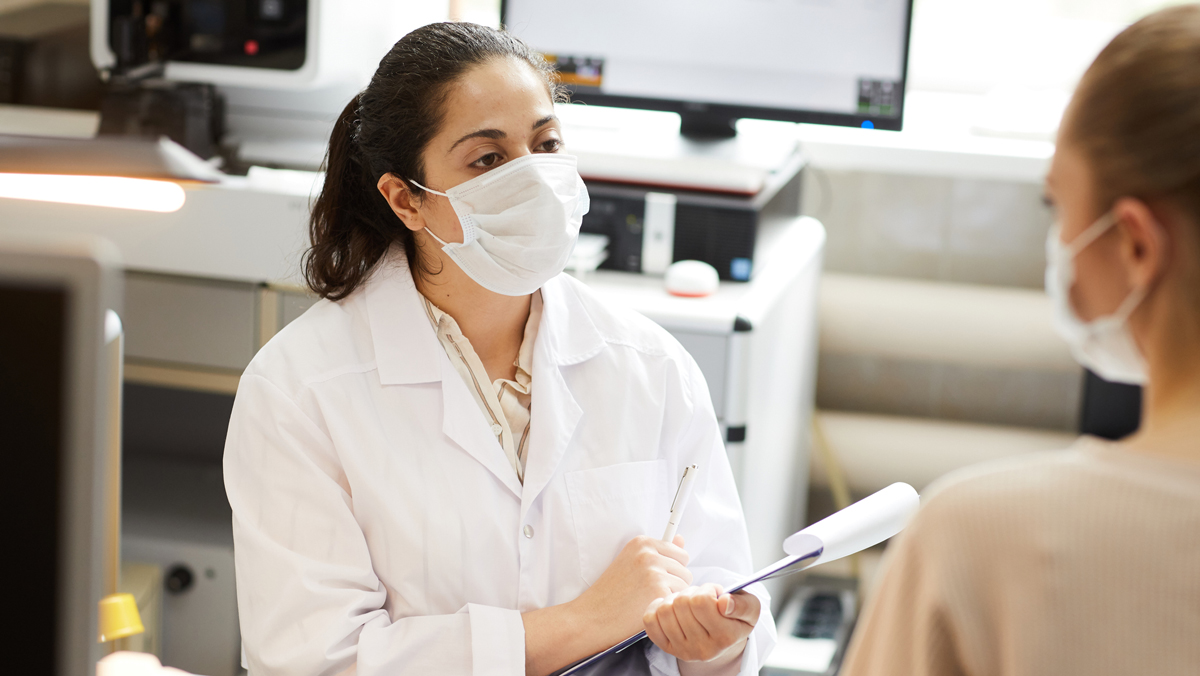Why we need the human element of remote clinical trials

Over the last year, we’ve noticed that “connectivity” doesn’t always equate to “connected” – and that’s just as true in the realm of clinical trials as it is in our personal lives. Amanda Barrell reports from a panel at the Patients as Partners Europe conference on remote clinical trials.
Decentralised trials have been growing in popularity in recent years, and the COVID-19 pandemic has served to accelerate that progress.
As study teams have moved to keep projects on track while observing infection control measures such as social distancing and stay at home orders, remote monitoring approaches have become ever more commonplace.
It is a shift that is likely to stay, thanks to its increased convenience for participants, but some are calling for the research fraternity to ensure they don’t throw the baby out with the bath water.
Patients as Partners
A panel discussion held at last week’s virtual Patients as Partners Europe conference talked about the difference between “connectivity” and “being connected”.
While the advocates welcomed the convenience benefits of remote monitoring, they said it was important to understand – and retain – the value of face-to-face visits.
Anita Eik Roald explained that she was “extremely sick” with severe bladder cancer when she joined the clinical trial that would ultimately save her life.
“I had to go to the hospital every 14 days for one-and-a-half years,” she told the meeting, adding that the visits could last up to eight hours.
“Each time, I had the opportunity to talk with the doctors and tell them about the side effects. They gave me a huge amount of support.”
Roald believes she was only able to benefit from this support because of the relationship she had with the study team.
“The trust has to be there, and to get that trust, we have to see the doctors and see the team,” she said.
Building engagement
Of course, contact with the study team doesn’t have to be face-to-face: it could be over the telephone, via email or messaging apps. The important thing is that it is there, the panel agreed.
Thomas Smith, who lives with cystic fibrosis, said: “When you participate in a trial or a study, it can feel like you go to your outpatient clinic, somebody explains what to expect, tells you to fill in a diary or whatever, and then tells you ‘go away and we'll see you in 12-18 months’.”
But while some might see this “hands-off” approach as less burdensome on the patient, it can actually be counterproductive, he said.
“I need to feel obligated to something, and if it is just a piece of paper telling me what to do, I am going to struggle to care about it once the initial novelty of taking part has worn off,” said Smith.
He suggested a more active role for study liaison personnel who could help participants feel more connected to the study by being available to answer questions and “checking in” once in a while.
“I think that kind of thing can really help with retention, by humanising the process and building relationships,” Smith said, adding there was “no need for expensive proprietary apps”.
“WhatsApp and the telephone are fine.”
Added value
It’s also about making sure that participants get what they want out of a study, said Phil Kelly, a bladder cancer patient and advocate.
“When I was looking for trials to participate in, I was hoping they would ensure I had the best standard of clinical practice applied to my situation – that I had the maximum level of intervention monitoring from the most qualified experts in my condition.
“Something that is of significant benefit to participants is being able to get the best service available for their condition.”
Nneka Smith agreed, explaining that taking part in sickle cell disease research at her own hospital had transformed her relationship with her healthcare team.
“I've gone from not seeing my haematology team more than once a year for my annual check-up, to seeing them regularly.
“I now speak to my haematology nurse once or twice a month. She emails me, rings me and reminds me of when I need to come in. I see my consultant at least twice a month. It has made such a difference - I now feel connected to my team and to my point of care.”
This level of connection and contact should be applied to everyone, regardless of how close they live to their research centre, the panel agreed.
“We have to remember a lot of people are not part of the centres the trials are being run in, so they don't know the specialists or any of the team,” said Nneka.
“I think it's really important that before any treatment starts, people have an opportunity to meet the team and get to know the medical professionals so they can form that bond.”
Hybrid model
Remote monitoring can be more convenient, especially when people live miles from research centres. As with all things patient centricity, however, there is no one-size-fits-all solution.
“I think it is very important that we get this hybrid solution right,” said Roald, adding that she thought it would help with recruitment, especially where research centres were few and far between and where participants were particularly poorly.
“But it has to be personalised and adjusted for technical skills, severity of illness and each person’s preference.”
The right approach might mean intermittent face-to-face consultations with telephone or video contact in between, or it exclusive text and email communication.
Whatever the breakdown of “in real life” and virtual, the panel agreed, human-to-human contact is vital to the success of remote clinical trials.
About the author
Amanda Barrell is a freelance health and medical education journalist, editor and copywriter. She has worked on projects for pharma, charities and agencies, and has written extensively for patients, healthcare professionals and the general public.













